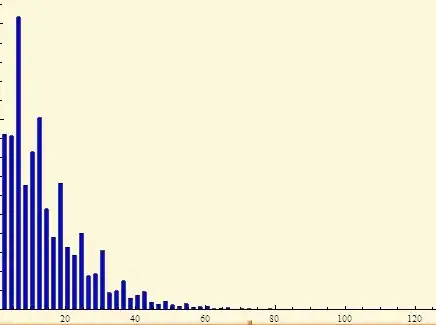It is well-known that gaps between successive primes have i.e. multimodal distribution (with peaks at $6 k$):

I'm interested to know: what is the most suitable approximation for such weird distributions? The envelope of peaks looks like $\chi^2$ ??
It is well-known that gaps between successive primes have i.e. multimodal distribution (with peaks at $6 k$):

I'm interested to know: what is the most suitable approximation for such weird distributions? The envelope of peaks looks like $\chi^2$ ??
Asymptotically it depends on the radical of k: basically take $$ f(k)=\prod_{p|k,\ p>2}\frac{p-1}{p-2} $$ and compare for different k. So f(6) = 2 > 1 = f(8), so gaps of length 6 are asymptotically twice as common as gaps of length 8. (Obviously k needs to be even.)
You asked (in a comment) for a smooth envelope. Using Mertens' theorem and the Prime Number Theorem it can be shown that $$ f(k)=O(\log\log k) $$ and this bound is tight in the sense that there is some $\alpha$ with $f(k)>\alpha\log\log k$ for infinitely many $k$. (This can be computed without too much difficulty, if desired.)
You might notice that this does not resemble the curve you have drawn. This is the result of a number of separate factors:
EMPIRICAL RESULTS:
We are talking about primes in some interval between xbar-dx to xbar+dx where xbar is up to around 10^40, and dx is up to around sqrt(xbar)
The number of gaps G between successive primes p = 6*k+1 in this interval can be approximated by a log-linear distribution: log( G(6*k) ) = A + B*k, for k = 1, 2, ... N small enough.
Similarly, The number of gaps G between successive primes p = 6*k-1 in this interval can be approximated by a log-linear distribution: log( G(6*k) ) = C + D*k, for k = 1, 2, ... N small enough.
The results for (6*k+1) and (6*k-1) need to be combined to get the approximation for gaps between all the primes.